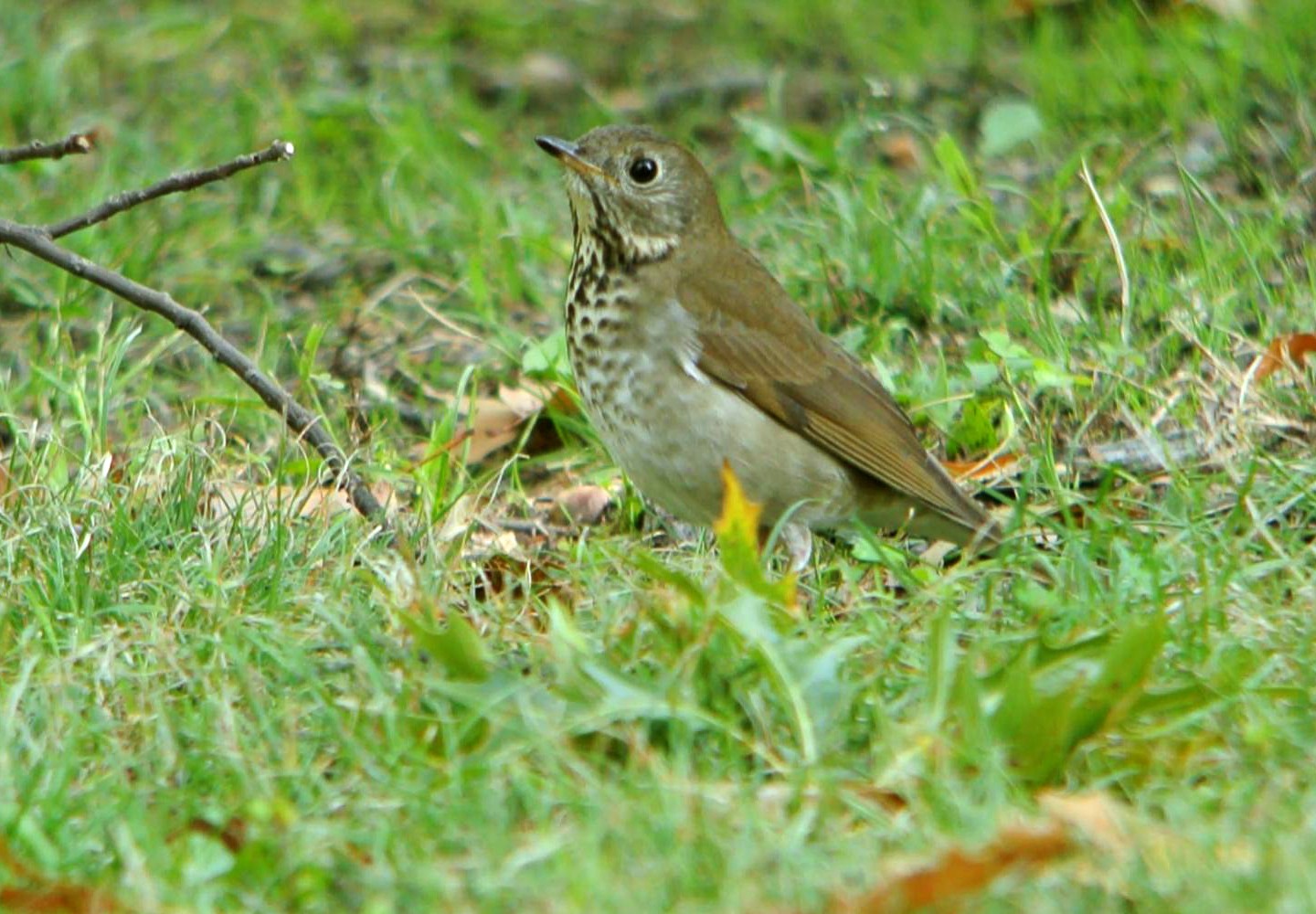Grey-cheeked Thrush
A species of American Brown Thrushes and Nightingale-thrushes, Also known as Alice's Thrush Scientific name : Catharus minimus Genus : American Brown Thrushes and Nightingale-thrushes
Grey-cheeked Thrush, A species of American Brown Thrushes and Nightingale-thrushes
Also known as:
Alice's Thrush
Botanical name: Catharus minimus
Genus: American Brown Thrushes and Nightingale-thrushes
Content
Description People often ask General Info
 Photo By Andy Reago & Chrissy McClarren , used under CC-BY-2.0 /Cropped and compressed from original
Photo By Andy Reago & Chrissy McClarren , used under CC-BY-2.0 /Cropped and compressed from original Description
The grey-cheeked thrush is slightly larger than other Catharus thrushes, about 16 to 17 cm (6.7 in) in height and weighing between 26 and 30g. Wingspan ranges from 12.6-13.4 in (32-34 cm). The bird can be identified by its grayish face, partial pale eyering, drab gray-brown upperside and extensively dusky flanks. The area between the eye and the beak is grayish as well, but the area running from the beak to above the eye is grayish white. The gray-cheeked thrush is nearly identical to the Bicknell's Thrush. There are two subspecies: the northern grey-cheeked thrush (Catharus minimus alicia), and the Newfoundland grey-cheeked thrush (Catharus minimus minimus). Catharus m. minimus can be distinguished by its overall browner coloration and buffer wash to the breast, compared to the Catharus m. alicia. Catharus m. minimus also has an extensive brighter yellow area at the base of the lower part of the beak. Catharus m. alicia has a grayish olive upperpart (whereas C. m. minimus has a brownish olive upperpart) and flanks, a lightly washed cream breast and duller lower part of the beak. 
Size
17-20 cm (6.5-8 in)
Colors
Bronze
Gray
White
Life Expectancy
7 years
Nest Placement
Shrub
Clutch Size
3 - 5 eggs
Incubation Period
1 brood
Number of Broods
12 - 13 days
Feeding Habits
Grey-cheeked Thrush predominantly subsists on insects like beetles, weevils, ants, wasps, bees, caterpillars, and grasshoppers, along with spiders, earthworms, and some crustaceans. During breeding, grey-cheeked Thrush forages on the forest floor, vibrates feet for startling insects, and rapidly pecks prey. Nonbreeding diet shifts towards fruits like cherries and berries, with grey-cheeked Thrush foraging on forest floors or perching for ripened tree fruit. They assist in seed dispersal and may feed near army ants to capture disturbed insects.
Habitat
Grey-cheeked Thrush occupies boreal forests and ecotones bordering the Arctic tundra, preferring regions with dense coniferous trees, shrub thickets, and open canopy forests dense with understory. Habitats range from lowland to subalpine and feature a well-developed shrub layer, rich with dwarf birch and berry bushes. During breeding, they adapt to willow and alder beds north of the tree line.
Nest Behavior
Grey-cheeked Thrush's nest building is likely female-led, with nests more robust in shrubs/trees than ground ones.
Nest Characteristics
Grey-cheeked Thrush typically nests in branch crotches of shrubs or in trees a few feet off the ground, occasionally on the ground near tree bases. The outer nest is composed of twigs, rootlets, grass stems, or horsetail, while the interior is lined with lichen, moss, and fine grasses. These nests measure about 4 inches across and 2.8 inches high.
Dite type
Insectivorous
People often ask
General Info
Feeding Habits
Bird food type
Bird Feeder Type

Ground

Platform
Sounds
Call
Recording location: United States
Call
Recording location: United States
Song
Recording location: United States
Song
Recording location: United States
Behavior
Grey-cheeked Thrush exhibit a retiring nature, favoring secluded habitats where their breeding rituals remain largely unrecorded. These birds exhibit pronounced sexual dimorphism in migration patterns, with males preceding females to breeding grounds, which are often still enveloped in snow. During early spring, the males perch aloft, their melodies punctuating the air as they anticipate the thaw. They vigorously defend territories through conspicuous threats and aerial pursuits directed at conspecific rivals, signaling aggression through distinctive postures and movements.
Distribution Area
The grey-cheeked thrush is a long-distance migrant species with a migration on average of 300 km. They are believed to spend their winter in the Amazon basin and will cross the Caribbean Sea and Gulf of Mexico during their spring migration. They are present in their breeding ground from May to August. They breeding range includes the northern boreal forests from Newfoundland to Alaska in North America and across the Bering Sea to Eastern Siberia associated with dense conifer and broadleaf shrub thickets. C. minimus remains uncommon to rare in most regions of North America but can be spotted in any wooded habitat. The breeding range extends north of the treeline into low Arctic willow and alder beds. Grey-cheeked thrushes prefer low coniferous woods, including young regenerating forests, open canopy old growth forests having a dense growth of shrubs and small conifers in the understory, and dense, stunted spruce and fir on windblown sites and near the tree line. The subspecies of C. minimus are also separated by their different breeding ranges: Catharus m. alicia breeds from Labrador west to Siberia, and Catharus m. minimus breeds on the island of Newfoundland and possibly adjacent portions of southern coastal Labrador. 
Species Status
Not globally threatened.

 Photo By Andy Reago & Chrissy McClarren , used under CC-BY-2.0 /Cropped and compressed from original
Photo By Andy Reago & Chrissy McClarren , used under CC-BY-2.0 /Cropped and compressed from original